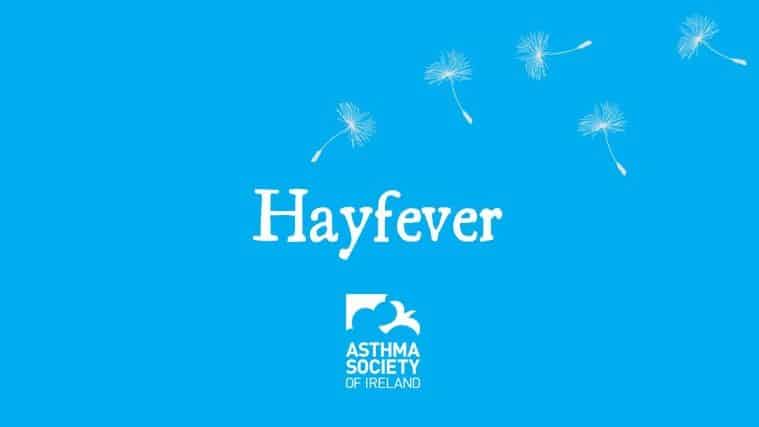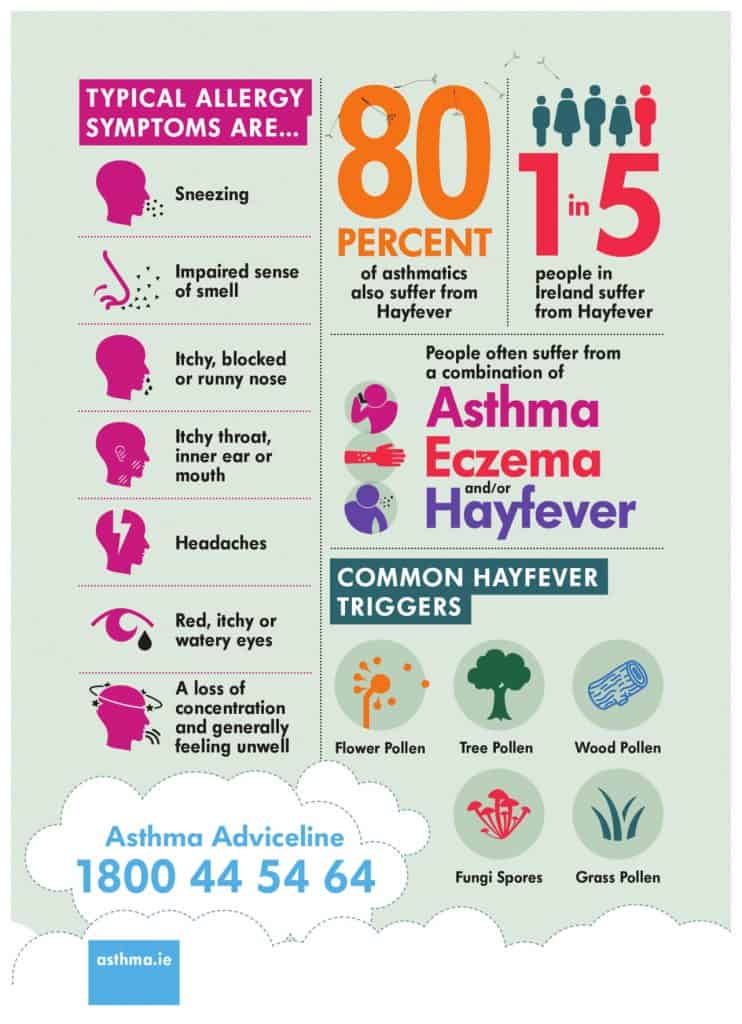One in five Irish people have hayfever, 376,000 of these also live with asthma
Check out our Gardening with Asthma & Allergies resources at Bloom 2018 or online
Barbecues. Sunbathing. Paddling pools. Raised flower beds. Hanging baskets. The garden is the heart of the Irish summer. At this time of year, we all look forward to bringing it back to life. However, for the 376,000 Irish people living with both asthma and hayfever, the garden can feel like the ultimate health hazard.
Hayfever affects one in five people in Ireland, bringing with it irritating symptoms like itchy eyes, runny nose and headaches. For the 80% of people with asthma who also live with hayfever, it can be more serious – potentially leading to a flare-up of their asthma symptoms and, in some cases, causing an asthma attack.
To help people with asthma and hayfever regain their green fingers, the Asthma Society, in partnership with Dyson Ireland, is pleased to launch our Practical Tips for Gardening with Asthma and Allergies leaflet at Bloom 2018!
The leaflet is also available online here. For tips on creating an allergy friendly garden, see our extensive Gardening with Asthma and Allergies booklet here. Copies of the leaflet will also be available in the Dyson area at Bloom all weekend.
Sarah O’Connor, CEO of the Asthma Society, will also be doing a Facebook Live Q&A at 12pm with Dr. Marcus Butler, respiratory specialist consultant, St. Vincent’s Hospital, and Pam Quinn, respiratory nurse specialist, Mater Hospital, at the Dyson stand by the picnic area. Any person attending Bloom is welcome to come along! The Asthma Society is calling on its social media followers for any asthma or hayfever questions they want answered on the day. The winner of the Dyson Pure Cool Air Tower will also be announced during this Facebook live.
Sarah O’Connor, CEO of the Asthma Society of Ireland, said:
“People with asthma and hayfever often have to make significant lifestyle changes to stay well. When it comes to outdoor activities like gardening, hiking or family days out, these changes can often seem overwhelming and many people may feel their quality of life suffers as a result. Luckily, small measures add up. Our list of practical tips is designed to help people with asthma and hayfever enjoy the garden and being outdoors without having to make major sacrifices, all while keeping well and avoiding any asthma flare-ups Help and support on managing your asthma and hayfever is available by calling our free nurse Adviceline on 1800 44 54 64.”
What is Hayfever?
An allergy is an immune reaction in the body which is caused by contact with an allergen. Allergens are substances which are ordinarily harmless and cause no problems for people without allergies.
In hayfever (or allergic rhinitis), an immune response starts in the eyes and lining of the nose whenever a particular allergen or allergens are inhaled. This immune response causes the swollen nasal passages and itchy eyes which are familiar to anyone with the condition. Hayfever can be seasonal or occur all year round. Seasonal hayfever usually happens because of an allergy to pollen or spores that only appear at certain times of year.
Common hayfever symptoms:
- Runny nose and nasal congestion
- Watery, itchy, red eyes
- Frequent sneezing
- Itchy nose, roof of mouth or throat
- Headache
- Fatigue
- Swollen blue coloured skin under the eyes
- A loss of concentration and generally feeling unwel
Paul Dawson, Dyson Global Product Development Director said:
“There are a plethora of air pollutants that can accumulate in the home. The most obvious of these is pollen, which is drawn in through open windows – this can trigger allergic reactions. Pollutants come in many different shapes and sizes so it’s important to have the right cleaning system to maintain a healthy home environment. HEPA filters, like in the Dyson Pure Cool™ purifier fan, are highly effective at capturing fine particles like pollen. The machine is also equipped with smart sensors which automatically monitor the environment for pollutants and present the information to you in real time.”
Practical Tips for Gardening with Asthma and Allergies:
- Check the pollen forecast at asthma.ie before venturing outside. Try to stay indoors if the pollen count in your area is high.
- Shut all your windows before gardening to keep dislodged pollen and dust out of your home.
- Wear wraparound sunglasses to stop pollen getting into your eyes.
- Put Vaseline around your nostrils to trap pollen.
- Make sure your asthma is well controlled and take your regular preventer medication, as prescribed.
- Wear a hat to stop pollen getting caught in your hair and brush your hair after gardening.
- Shower, wash your hair and change your clothes if you have been outside for an extended period.
- If you have a skin allergy, keep your hands, arms and legs covered when gardening.
- Pollen can cling to animal fur. Keep furry pets out of the house during hayfever season and wash or bathe them after being outdoors to remove any pollen from their fur.
- Using an air purifier indoors can help reduce the airborne allergens present inside the home, even when the pollen count is high outdoors.
For people with asthma, hayfever can be a serious condition. Hayfever can trigger asthma symptoms and this in turn increases the risk of an asthma attack. An asthma attack is a medical emergency and can be fatal. One person dies a week in Ireland as a result of their asthma.
Know the symptoms of an attack and know the 5 Step Rule to save a life – go to asthma.ie for more information on how to prevent and manage asthma attacks. The Asthma Society strongly recommends that people with asthma visit a health care professional if they have an asthma attack, as this indicates that their asthma is not controlled and they may be at risk.
Symptoms of Asthma Attack
- Cough
- Wheeze
- Shortness of breath
- Chest tightness
- Too breathless to finish a sentence
- Too breathless to walk, sleep or eat
- Lips turning blue
5 Step Rule
1. Stay calm. Sit up straight – do not lie down.
2. Take slow steady breaths.
3. Take one puff of your reliever inhaler (usually blue) every minute.
Use a spacer if available.
People over 6 years can take up to 10 puffs in 10 minutes.
Children under 6 can take up to 6 puffs in 10 minutes.
4. Call 112 or 999 if your symptoms do not improve after 10 minutes.
5. Repeat step 3 if an ambulance has not arrived in 10 minutes.
Remember, if someone is having an asthma attack:
• Do not leave them on their own.
• Extra puffs of reliever inhaler (usually blue) are safe.




